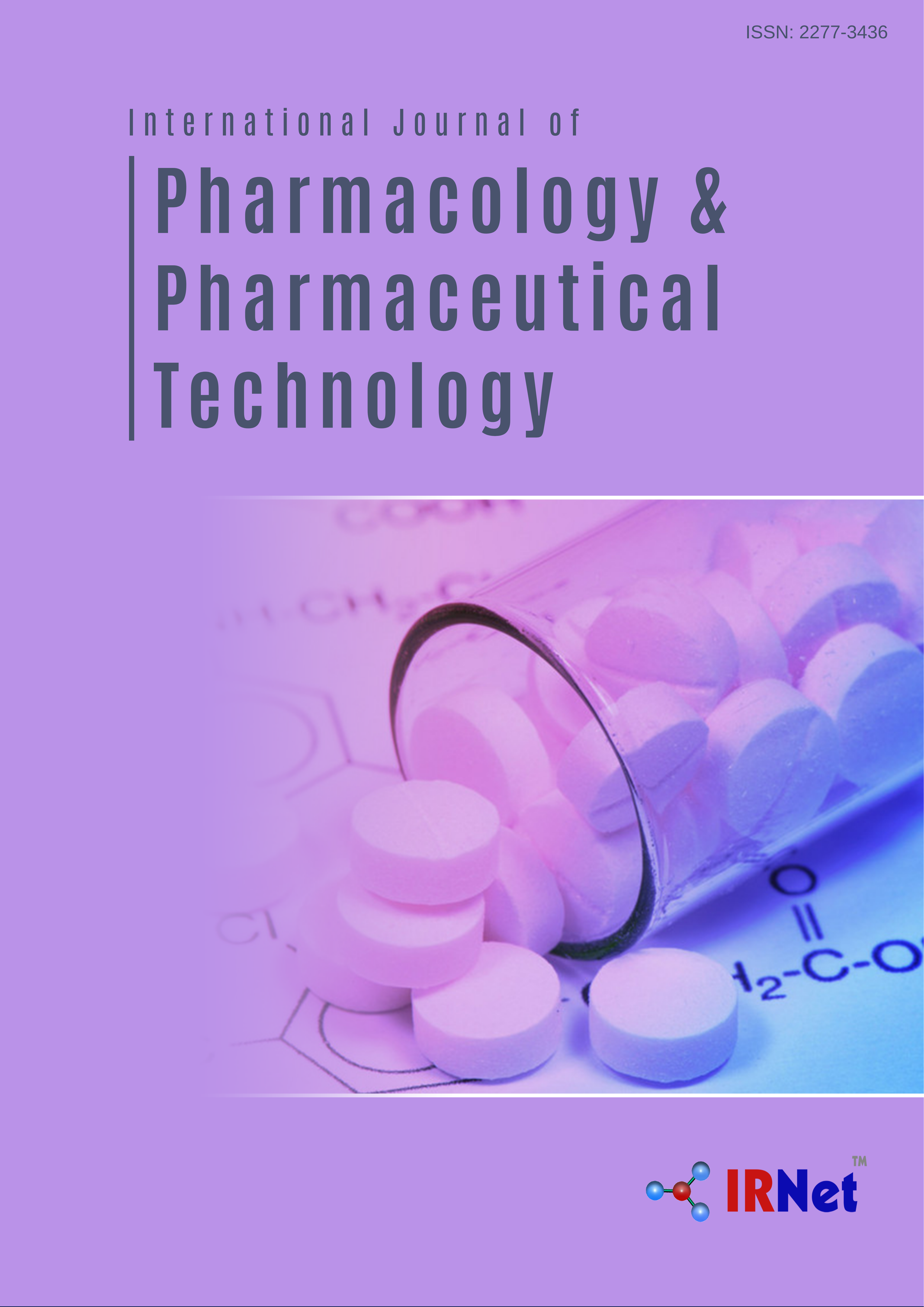International Journal of Pharmacology and Pharmaceutical Technology IJPPT
ISSN: 2277-3436
Conference

Abstracting and Indexing


IJPPT
epatoprotective Effect of Carrot (Daucus carota L.) on Hepatoprotective Effect of Carrot (Daucus carota L.) on Paracetamol Intoxicated Rats Paracetamol Intoxicated Rats
Pushpendra Kumar Jain,
Department of Pharmaceutical Sciences, Dr. Hari Singh Gour Central University, Sagar, Madhya Pradesh, India
Navneet Khurana
Department of Pharmaceutical Sciences, Dr. Hari Singh Gour Central University, Sagar, Madhya Pradesh, India
Yogesh Pounikar
Department of Pharmaceutical Sciences, Dr. Hari Singh Gour Central University, Sagar, Madhya Pradesh, India
Shailendra Patil
Department of Pharmaceutical Sciences, Dr. Hari Singh Gour Central University, Sagar, Madhya Pradesh, India
Asmita Gajbhiye
Department of Pharmaceutical Sciences, Dr. Hari Singh Gour Central University, Sagar, Madhya Pradesh, India
Abstract
Plant products play a crucial role in the hepatoprotection through its antioxidants property. Therefore, search for modern medicine of plant origin with this property has become a central focus on hepatoprotection today. This study investigated to search a new hepatoprotective agent from natural sources, the methanol extract of nutitional plant, Daucus carota leaves was tested against liver damage of albino rats. Levels of serum marker enzymes i.e. SGOT, SGPT (aminotransferases), ALP (alkaline phosphatase) and TB (total bilirubin) in serum respectively. The histopathological changes of liver sections were also compared with the respective controls. 30% paracetamol induced significant (P<0.05) increase in liver enzymes alongwith the hepatic necrosis and other visible disarrangements in hepatic tissues. Simultaneously, oral treatment with kaempferol (KF) isolated from D. carota plant reversed to all the serum and liver parameters, dose-dependently, in 30% paracetamol treated rats. The biochemical results were also compared with the standard drug i.e. silymarin. These findings indicate the hepatoprotective potential of D. carota fruit against liver damage might be due to the presence of flavonoid like KF constituents.
Recommended Citation
[1] [2] [3] [4] A.H. Ensminger and M.K.J. Ensminger, “Food for health: A Nutrition Encyclopedia”, Clovis, California, Peguss press, USA, 1986. D. Zhang and Y. Hamauzu, “Phenolic compounds and their antioxidant properties in different tissues of carrots”, J Food Agric Environ, vol. 2(issue 1), 2004, pp. 95-100. K. Suzuki, Y. Ito and S. Nakamura, “Relationship between serum carotene and hyperglycemia: A population-based cross-sectional study”, J Epid, vol. 12(issue 5), 2002, pp. 357-366. K. Ylonen, G. Alfthan and L. Groop “Dietary intake and plasma concentrations of carotenoids and tocopherols in relation to glucose metabolism in subjects at a high risk of type 2 diabetes”, Am J Clin Nutri, vol. 73(issue 6), 2003, pp. 424-414. [5] [6] [7] [8] [9] D.S. Michaud, D. Feskanich and W.B. Rimm, “Intake of specific carotenoid and risk of lung cancer in 2 prospective US cohorts”, Am J Clin Nutri, vol. 72(issue 4), 2002, pp. 990-997. M. Kobaek-Larsen, L.P. Christensen, W. Vach, J. Ritskes-hoitinga and K. Brandt, “Inhibitory effects of feeding carrots of falcarinol on development of azoxymethane-induced preneoplastic lesions in the rat colon”, J Agric Food Chem, vol. 53( issue 5). 2005, pp. 1823 1827. J.M. Gaziano, J.E. Mason and L.G. Branch, “A prospective study of consumption of carotenoids in fruits and vegetables decreased cardiovascular mortility in the elderly”, Ann Epidmiol, vol. 5, 1995, pp. 255-282. C. Nicolle, N. Cardinault, O. Aprikian, et al., “Effect of intake on cholesterol metabolism and antioxidant status in cholesterol fed rat”, Europ J Nutr, vol. 42(issue 5), 2003, pp. 254-261. C. Nicolle, E. Gueux, C. Lab, et al., “Lyphilized carrot ingestion lowers lipemia and beneficially affects cholesterol metabolism in cholesterol fed C57BL/6j mice”, Europ J Nutr, vol. 43(issue 4), 2004, pp. 237-245. [10] M. Ali, R. Ramachandran, M.R.M. Rafiullah, et al., “Prevention of carbon tetrachloride-induced hepatotoxicity by the ethanol extract of Capparis moonii fruits in rats”, Pharmaceutical Biology, vol. 42, 2004, pp. 286-288. [11] E. Porchezhian and S.H. Ansari, “Hepatoprotective activity of Abutilon indicum on experimental liver damage in rats”, Phytomedicine, vol. 12, 2005, pp. 62-64. [12] J.C. Geesin, J.S. Gordon and R.A. Berg “Retinoids affect collagen synthesis through inhibition of ascorbate-induced lipid peroxidation in cultured human dermal fibroblasts”, Archives of Biochemistry and Biophysics, vol. 278, 1990, pp. 350-355. [13] O. Said, K. Khalil, S. Fulder, et al., “Ethnobotanical survey of medicinal herbs of the middle eastern region”, Journal of Ethnopharmacology, vol. 83, 2002, pp. 251-265. [14] L. Bin and H. Luo, “Isolation of Flavonol glycosides from Daucus carota”, Chemical Journal on Internet, vol. 5, 1992, pp. 3. [15] D.D. Sawikar and E.D. Phandre, “Chemical constitutents of Maytenus emarginata wild” Indian J Chem, vol. 31, 1992, pp. 639. [16] G.L. Humanson, “Animal Tissue Technique”, San Francisco:WH Freeman and Company, 2nd ed, 1962, pp. 136-137. [17] J.N.T. Simplice, D.T. Jean, H. Léopold, et al., “Antimicrobial and antioxidant activity of kaempferol rhamnoside derivatives from Bryophyllum pinnatum”, BMC Research Notes, vol. 5, 2012, pp. 158-60